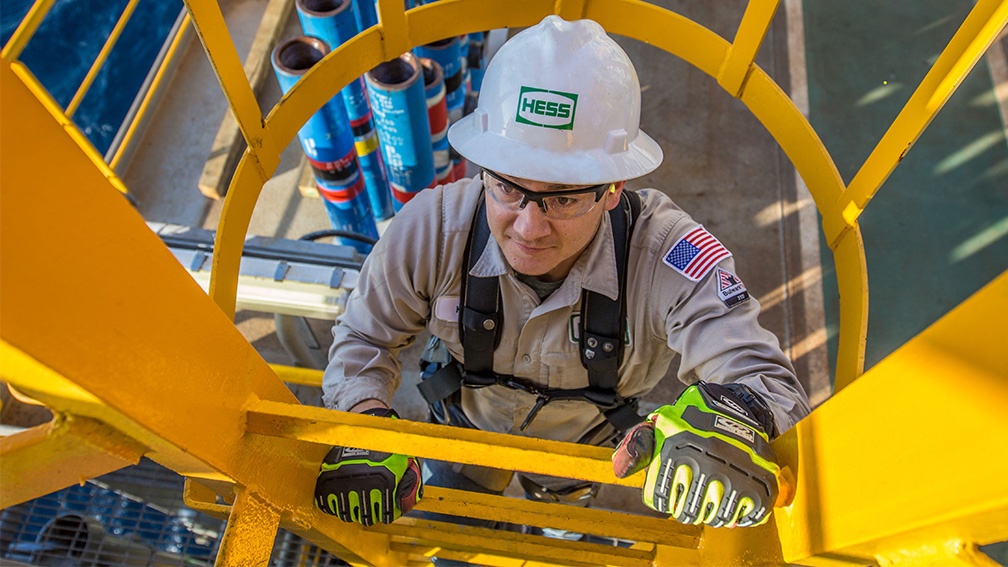The key to a strong safety management program lies in continuous improvement. Hess demonstrates its commitment to sustainable performance every day—we’ll tell you how.
When it comes to process safety management, Hess runs a tight ship. Within two years, its watertight safety and sustainability program has produced tangible results that benefit its employees, the community and, of course, the bottom line. Here are three ways we can see that happening right before our eyes.
- Safer Environments for Contractors
Perhaps one of the most important ways Hess’ safety and sustainability initiatives have made an impact is on employee and contractor safety. Through careful analysis of processes, plus innovative thinking, the company has greatly improved the safety record at its Bakken wells job site.
Instead of moving sand by blowing it around, they now use gravity to move sand. Eliminating the need for dust-producing blowers has increased safety. As a side benefit, operational costs have come down, too.
- Safer Project Execution in the Community
Even the process for engaging contractors demonstrates Hess's innovation in safety and sustainability. In the past, the format for pre-work project meetings was a one-to-many presentation led by Hess.
Now, Hess has switched to an interactive dialogue format, where everyone contributes to the conversation (including all the contractors). This collaborative approach sparked a much higher level of communication before its Baldpate field facility project even started. The result: a safer project and a happy community.
- Personal Safety Incidents Are Way Down
Overall, Hess has seen a reduction in incident reports from 2013 to 2015. In just two years, the Lost Time Incident Rate (LTIR) has decreased from .14 cases per 200,000 hours to .08 cases. That's a reduction of almost 50%. Likewise, its Total Recordable Injury Rate (TRIR) has gone down from 0.52 cases per 200,000 hours in 2013 to 0.36 cases per 200,000 in 2015.
On all three achievements, we applaud Hess and its safety and sustainability team for a job well done.
